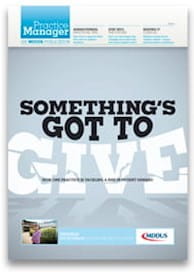IN evolutionary terms we humans are no different from our hunter-gatherer ancestors of ten thousand years ago who struggled to survive in a sometimes harsh wilderness. When faced with a perceived threat, we tend to respond in one of two ways – either we meet that threat head-on and aim to control it, or we retreat, withdraw and avoid it. This fight-or-flight instinct is hard-wired into our brains and has served us well in past millennia when threats were often physical and life-threatening.
Today most of us have exchanged the wilderness for a (some might say even wilder) office-based environment but that hard-wiring can still dictate our responses to stressful situations – whether it’s handling a conflict, saying “no” to colleagues, or giving someone constructive feedback. We tend to fall back on our natural passive or aggressive responses and this can make interactions more difficult. Passive behaviour might mean being unable to say “no” and thus becoming swamped with work. Aggressive behaviour can lead to fraught relationships within a team and hinder effective communication.
Assertiveness is often referred to as the middle-ground behaviour. It involves confidently identifying your wants, needs and rights in a situation while considering the wants, needs and rights of others. Assertiveness is about allowing time and space to respond to a situation rather than react to it. This might involve centering yourself, breathing and counting to 10, reflecting on an interaction and responding in an appropriate manner. It could mean a 10-second pause, or it might mean asking someone to come back to you tomorrow/next week/next month.
Another way of characterising assertiveness is – saying the right thing, in the right way, to the right person, at the right time. So what does this mean in practice?
THE RIGHT THING
Be clear about what message you are trying to convey in an interaction. For example, are you saying “no” to someone or “not right now”? Sitting down with pen and paper (or laptop) and scripting out the conversation can be beneficial. Start with what your desired outcome is and then what your opening sentence will be. Try and anticipate the other person’s responses – put yourself in their shoes. This will help you be prepared for any questions or objections they might raise. Also try and note key phrases that you want to include – not a tight script but a loose guide to help steer you through the interaction.
THE RIGHT WAY
Think about how you sound to the other person – your pace and tone of voice. Assertive individuals use an even, low tone and a steady pace, not too fast or slow. Catch yourself in the moment – what is your body language saying? Are your gestures fast and furious or are you standing with arms folded? Eye contact is also important. Maintain direct eye contact for around 60 per cent of the time. Any more than that and you may appear aggressive, any less can be perceived as passive or disinterested. Practice in front of a mirror or role play difficult conversations with a neutral party.
THE RIGHT PERSON
Ask yourself two questions. First: am I the right person to be dealing with the situation? If not, pass it on to whoever is responsible. Just because a task has landed on your desk does not mean that you need to own it. Second: are you speaking to the appropriate person to deal with a situation? There is no gain in complaining and moaning to others in the hope that they will champion your cause. What is high on your priority list may not be on somebody else’s.
THE RIGHT TIME
Timing is often key in being assertive. Is the person you are approaching already overloaded with a task or in a state of anger and frustration? Also you should allow yourself time to reflect on what you want to say, and to get into the proper state of mind. Don’t be afraid of asking for time to digest and reflect on a request. Remember the aim is to respond rather than react. Location is another consideration here. Neutral ground is often best for conversations where one party may feel disadvantaged – perhaps in the coffee room or an empty surgery.
Remember that assertiveness isn’t about “winning” every interaction. There are times when it won’t work and you have to accept that outcome, reflect and learn from it and move on. What assertiveness is about is dealing with others fairly, allowing them the same rights and considerations you expect. Sometimes that might mean being able to say “no” to a request or to ask for more time – or simply an understanding that everyone occasionally gets things wrong.
Cherryl Adams is a trainer and risk facilitator with MDDUS Training and Consultancy
This page was correct at the time of publication. Any guidance is intended as general guidance for members only. If you are a member and need specific advice relating to your own circumstances, please contact one of our advisers.
Read more from this issue of Practice Manager

Save this article
Save this article to a list of favourite articles which members can access in their account.
Save to library


